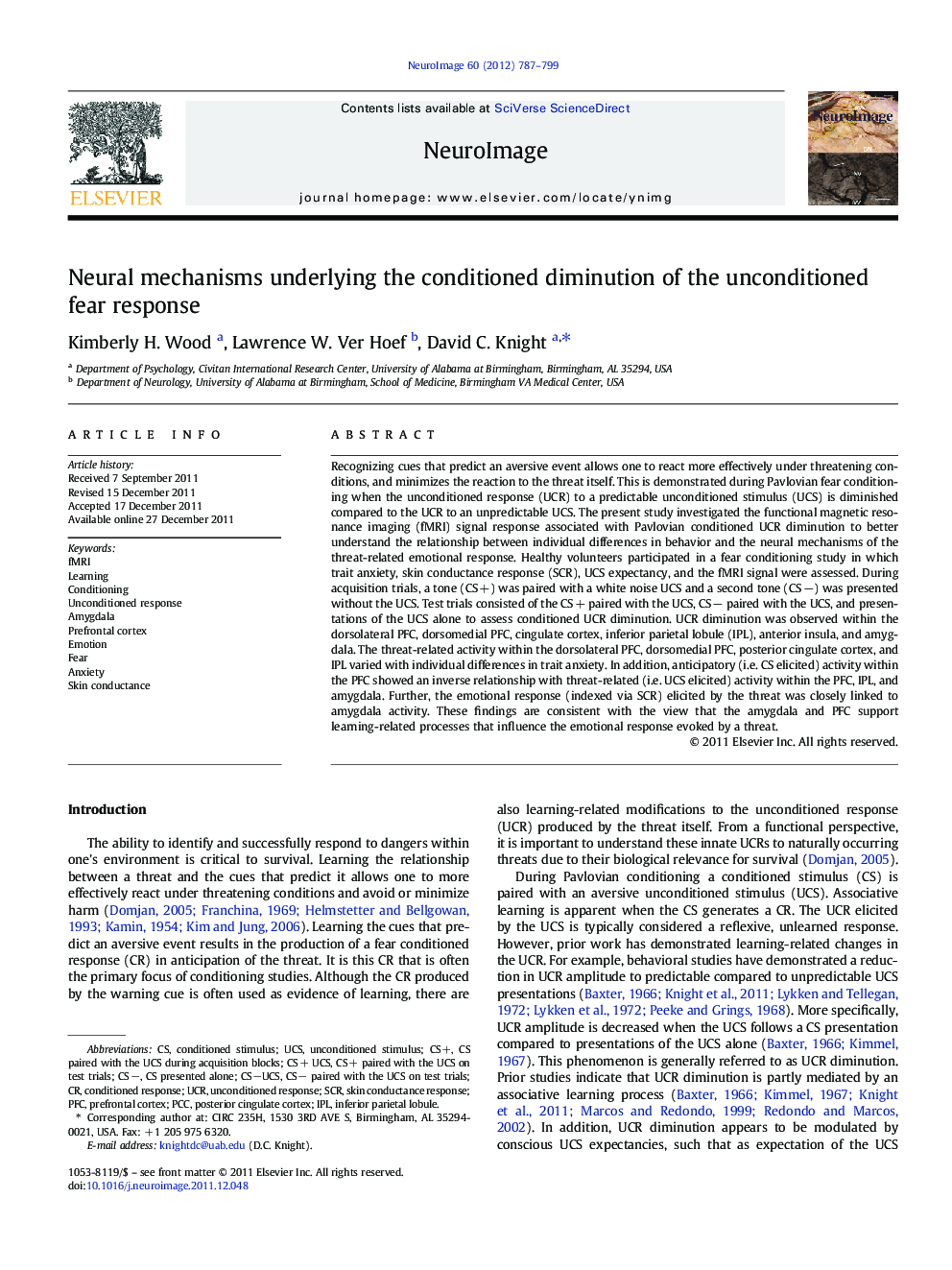| Article ID | Journal | Published Year | Pages | File Type |
|---|---|---|---|---|
| 6032501 | NeuroImage | 2012 | 13 Pages |
Recognizing cues that predict an aversive event allows one to react more effectively under threatening conditions, and minimizes the reaction to the threat itself. This is demonstrated during Pavlovian fear conditioning when the unconditioned response (UCR) to a predictable unconditioned stimulus (UCS) is diminished compared to the UCR to an unpredictable UCS. The present study investigated the functional magnetic resonance imaging (fMRI) signal response associated with Pavlovian conditioned UCR diminution to better understand the relationship between individual differences in behavior and the neural mechanisms of the threat-related emotional response. Healthy volunteers participated in a fear conditioning study in which trait anxiety, skin conductance response (SCR), UCS expectancy, and the fMRI signal were assessed. During acquisition trials, a tone (CSÂ +) was paired with a white noise UCS and a second tone (CSÂ â) was presented without the UCS. Test trials consisted of the CSÂ + paired with the UCS, CSÂ â paired with the UCS, and presentations of the UCS alone to assess conditioned UCR diminution. UCR diminution was observed within the dorsolateral PFC, dorsomedial PFC, cingulate cortex, inferior parietal lobule (IPL), anterior insula, and amygdala. The threat-related activity within the dorsolateral PFC, dorsomedial PFC, posterior cingulate cortex, and IPL varied with individual differences in trait anxiety. In addition, anticipatory (i.e. CS elicited) activity within the PFC showed an inverse relationship with threat-related (i.e. UCS elicited) activity within the PFC, IPL, and amygdala. Further, the emotional response (indexed via SCR) elicited by the threat was closely linked to amygdala activity. These findings are consistent with the view that the amygdala and PFC support learning-related processes that influence the emotional response evoked by a threat.
